All the exit-holes made by pests in timber on this- and the following pages are shown natural size.
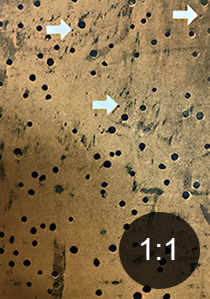
Chalcids
The exit-holes have a diameter of less than 1 mm (see arrow). They are always found close to the holes made by furniture beetles, on which the chalcids live (see p. 152).
Common furniture beetles
The exit-holes have a diameter ol 1.5-2 mm. This furniture beetle occurs in many kinds of deciduous and coniferous trees. The tunnels are most aften in the sapwood, but they may enter the heartwood. The wood dust is a uniform colour and feels gritty. The faeces are almost cigar-shaped. This is the species commonly found as woodworm in furniture and structural timber ( see pp. 121 and 163).
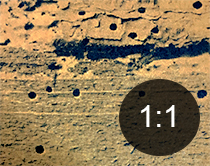
Ernobius mollis
The exit-holes have a diameter of c. 2 mm. This species occurs only in sofiwood (conifer) timber, but only in the bark and the outermost sapwood, and the exit-holes always penetrate the bark. The faeces are spherical, and they contain pale and dark particles, depending upon whether the larva has been feeding on bark or sapwood. Very common in houses where bark-covered timber is used (see p. 122).
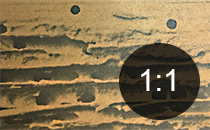
Dendrobium pertinax
The exit-holes have a diameter of 2-3 mm. This species is found almost exclusively in softwood that has been damaged by damp. It works mainly in the spring wood, while the summer wood remains behind in the form of lamellae. The wood dust is similar to that leftby the Common furniture beetle, but usually darker. The faeces are cylindrical (see p. 123).
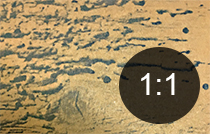
Death-watch beetle
The exit-holes have a diameter ol 3-5 mm. The larvae occur almost exclusively in oak damaged by damp, both in the sapwood and the heartwood. The faeces are large and lens-shaped (see p. 125).
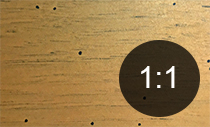
Fan-bearing wood-borer
The exit-holes have a diameter of 0-1.5 mm. The larvae are found in the sapwood on deciduous trees. The wood dust is very fine and rat her like talc (see p. 125).
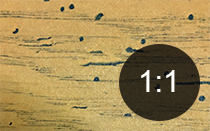
Powder post beetles
The exit-holes have a diameter of 0-1.5 mm. The larvae most frequently occur in the sapwood of oak, but may also be found in various exotie deciduous timber, and in bamboo. The wood dust is extremely fine and feels like talc (see p. 125).
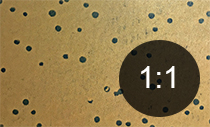
Lymexylon navale
Very small exit-holes, less than 1-2 mm across, usually in oak. Some of the tunnels are completely empty, others have very tightly paeked wood dust. The tunnels frequently enter the heartwood and unlike those made by ambrosia beetles they do not have a dark lining (see p. 128).
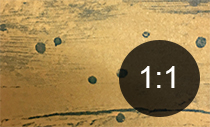
Wood-boring weevils
The exit-holes have a diameter of 1-2 mm. The larvae of these beetles only attack timber damaged by damp. It is typical that many of the tunnels break through the surface of the timber. The wood dust is finer han that produced by the common furniure beetle (see p. 128).
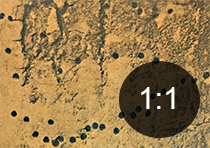
Ash bark beetle
The exit-holes have a diameter of c. 1.5 mm, and they always emerge through bark. This species only occurs in ash and the characteristic tunnels, which are full of dark wood dust, can be seen when the bark is removed ( see p. 130).
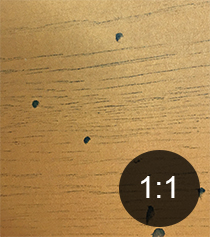
Ambrosia beetles
Tunnels of this beetle that reach the surface may be confused with the exit-holes of the common furniture beetle. However, they contain no wood dust and usually have a distinct darkish lining due to the ambrosia fungus. The colour of the lining varies from pale brown to almost black, and it may be restricted to a narrow zone or extend out into the timber. Several species of ambrosia beetle occur in imported hardwood used for furniture, panelling, etc. The diameter of the tunnels depends upon the species concerned (see p. 131).
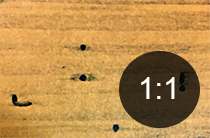
Trypodendron lineatus
Common in softwoods used as structural timber. The tunnels, with a diameter of 1-2 mm, run in a very characteristic way ( see p. 132), and not at random as in the common furniture beetle.
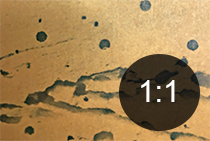
Bostrychid beetles
Many species of tropical boring beetles of the family Bostrychidae occur in imported timber: in boxes, carved figures, baskets, etc. The exit-holes have a diameter of 1-5 mm, depending upon the species. Unlike the work of the powder post beetles they make distinct larval tunnels, circular in cross section. The wood dust is powdery, but coarser than that made by powder post beetle larvae and more tightly packed ( see p. 128).

Woodwasps
The exit holes have a diameter of up to 1 cm. They are circular, with completely smooth edges, and look as though they had been bored with a 10 mm drill. Wood wasps occur only in conifers, the larval tunnels being made in both sapwood and heartwood. The coarse wood dust is so tightly packed that it may be difficult to scrape out of the tunnels (see p.142).

Sawflies
The larvae may gnaw into timber when they are about to pupate. The tunnels are c. 2 mm in diameter. It is obvious that they have been gnawed from the outside, and there are often several attempts, each a few mm deep. The attack always takes place on external timber work, and normally on new houses which are near to uncultivated areas with weeds (seep. 144).

Goat moth larvae
Larvae of the goat moth may gnaw their way into timber when ready to pupate. The holes are circular with a diameter of up to 2 cm. Unlike those made by wood wasps these holes are somewhat frayed at the edge, and they are usually found in mouldering timber (see p. 147).
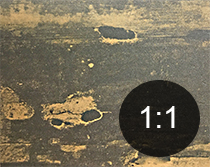
Wharfborer
The exit-holes are irregular, oval or circular, up to 6 mm in diameter, and they occur mainly in softwood. They may be confused with those made by the house longhorn beetle but the present species only attacks damp timber, and it is typical that the larval tunnels contain numerous pieces of wood fibre ( see p. 141).
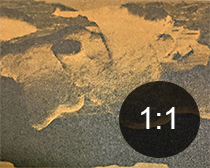
Callidium violaceum
The oval exit-holes measure c. 6 x 3 mm. The species is found only in softwood. The larval tunnels, which lie just under the bark, are full of wood dust, with a mixture of dark and pale particles. The exit-holes are always in the bark, the oval holes in the sapwood being the openings of the pupal chambers. Very common in timber which still has the bark on (see pp. 132 and 163).
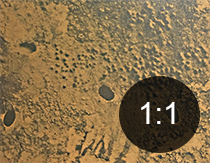
Phymatodes testaceus
The oval exit-holes measure c. 6 x 3 mm. This species only attacks timber from deciduous trees. The larval tunnels lie just below the bark and are full of wood dust, with a mixture of dark and pale particles. The exit-holes are always in the bark, the oval holes in the timber itself being the openings of the pupa chambers. Common in wood logs (see p. 134).

House longhorn
The exit-holes are mostly oval, but usually irregular with frayed edges. Their size is variable, but is normallv c. 6 x 3 mm. The larval tunnels often extend right out to the surface, but a thin outer layer of wood is always lefi. The tunnels are full of uniformly coloured, yellowish wood dust. The faeces are cylindrical ( see p. 135).

Tetropium luridum
This species attacks softwoods almost exclusively. In timber that has been planed the pupal chambers will often be seen. They are oval, measuring 6 x 4 mm, without wood dust but often containing a few coarse wood fibres. The larval tunnels, which are full of uniformly coloured, dark wood dust, run in the bark, with only a slight trace in the wood. The exit-holes are oval with smooth edges, 6 mm lang and 4 mm across. They also open out through the bark and so are not found in worked timber (see p. 138).
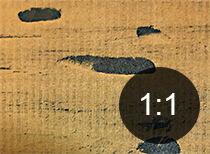
Criocephalus rusticus
The exit-holes are oval, with smooth edges, and with a maximum diameter of 0.5-1. 3 cm. This beetle only attacks conifers, especially pine, damaged by damp. The larval tunnels which occur in both sapwood and heartwood are oval and strikingly broad. The wood dust is extremely firmly packed in the tunnel and difficult to scrape out (see p. 139).
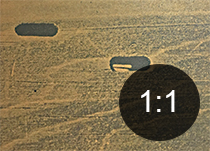
Pine sawyer
The round circular exit-holes have a diameter af 5-8 mm, and normally open out through the bark. Worked timber often shows larval tunnels that the plane has cut through.
In cross section, the tunnels are oval, measuring c. 8 x 3 mm. They are therefore similar to those af Criocephalus but contain no wood dust (see p. 139 ).

Leptura rubra
The circular exit-holes have a diameter of 5-8 mm, and may therefore be confused with those made by wood wasps. This beetle only attacks conifers damaged by damp and the larval tunnels are almost oval in cross section and full of firm wood dust which is not, however, so firm as that left by wood wasps. The faeces are cylindrical with rounded ends (see p. 139).

Gracilia minuta
Small oval exit-holes in the bark, almost always in willow.
The larval tunnels lie between the bark and the wood (see p. 139).
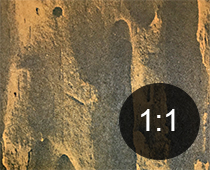
Small black ant
These ants form labyrinthine tunnel systems in soft, crumbling timber which has been attacked by fungus or possibly by wood-boring beetles.
The surface of the timber takes on a typical rounded and polished appearance. When the colony is deserted the tunnels are completely empty ( see p. 145). There are other ants which also attack timber ( see pp. 120 and 145).
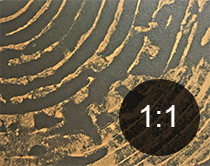
Termites
Termites excavate trees, leaving behind the hard summer wood in the form of lamellae. There is no wood dust in the tunnels, but one finds the nest chambers, which are built of earth particles cemented together ( see p.149).
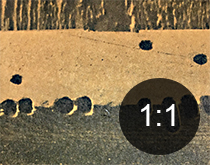
Larder beetles
The larvae of many beetles and moths sometimes gnaw their way into timber when they are about to pupate. The pupal tunnels are gnawed from the outside and usually end blind, but if there are many of them the timber may be riddled with a labyrinth of tunnels. There is no wood dust in these tunnels, but empty larval casts are nearly always found.
The pupal tunnels of larder beetles are circular in cross section, with a diameter of c. 4 mm (seep. 120).
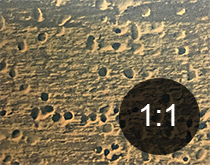
Australian spider beetle
The pupal tunnels are circular in cross section, c. 2 mm in diameter. They are normally not very deep and are often only pits in the surface of the timber ( see p. 120).




